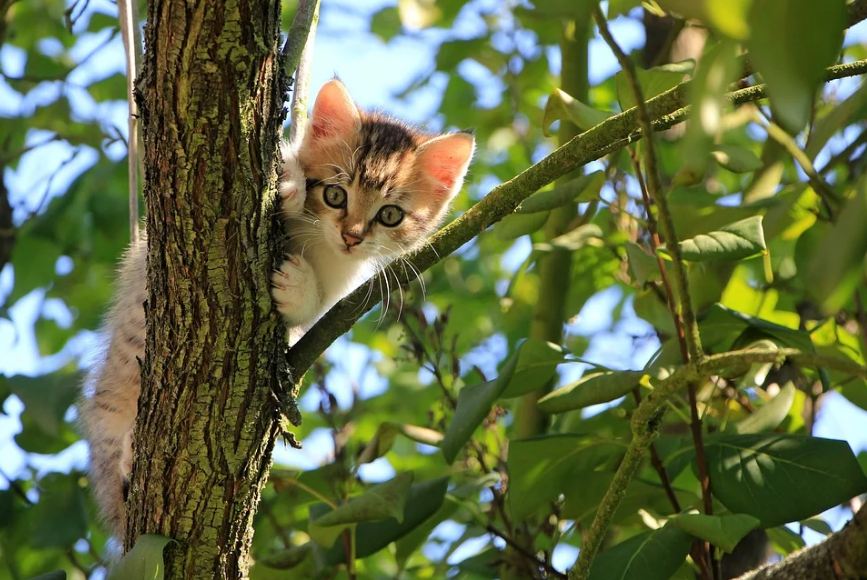The history and evolution of domestic cats is an ongoing debate. Researchers and scientists have continuously studied the ancient fossils of this animal and tried to find out the exact date of origin. Until now, we can safely say that cats existed around 10,000 to 12,000 years ago. However, scientists still find it hard sometimes to differentiate between a cat’s and tiger’s skull. Believe it or not, there are so many similarities that sometimes even the researchers get caught up in the confusion.
On the other hand, it has also been found that back in the day cats used to be wild and belonged to the Felix silvestrislybica family, until they were domesticated and evolved into the Feliscatus that we have today. Therefore, let’s take a look into how cats evolved over time and the role of humans in the process as well.
Common Features
The Feliscatus is a species of the Felidae family. Researches are of the view that this family has evolved the most over the years. Furthermore, the Felidae family is categorized into three types: Panthera, Acinonyx, and Felis. As mentioned earlier, since there are so many similarities and common features between felines, it is difficult to categorize them. Scientists are working on developing a way that helps them classify such animals more easily by differentiating the basic features.
However, all cats you see today were once predatory hunters back in the day and still are. Even if a cat is domesticated, you cannot take away its natural hunting abilities. That is why they always had a keen sense of smell, taste, and hearing. Anatomical characteristics suggest that all 37 species within the Felidae family belonged to the same ancestor living around 10-12 million years ago in Asia. Over the years, the Felidae family has experienced a huge expansion all over the world.
Today, you can find cats in almost every country and part of the world except the Antarctic, Arctic, and Australia. Researchers state that the rise and fall of sea levels, both contributed to this expansion. The cats occupied the origins where the seal levels were low, whereas isolated the species development where the sea levels were high. In addition to that, the global migration of the cats was also influenced by their natural ability to search for their own territories and following the prey species they hunted.
The evolution of domestic cats suggests that the Felidae family is amongst the most developed carnivorous hunters except lions. While lions still travel in packs, all the other wild cats on the other hand hunt in solidarity and mostly fend for themselves. Moreover, cats have a relatively different way of hunting as well. They look for and develop their own territories while marking them using their scent.
Felius Catus Evolution and Adoption
Researchers have been able to come up with sufficient evidence suggesting that humans and cats did co-exist back in the day. However, the cats were mainly wild. Furthermore, they are of the view that the domestication of cats began in Egypt nearly 3600 years ago. The skulls of cats discovered in the cat burial grounds in Egypt are assumed to belong to the species Felissylvestrislybica.
This is the same species that are found living in North Africa and Asia and is thought to be the major ancestor of the Feliscatus we see today. At the same time, recent studies have suggested that the domestication of cats occurred some 10, 000 years ago in the Middle East. One major proof supporting domestication was found in Cyprus when scientists discovered a cat buried with its owner around 9,500 years ago. Since Cyprus did not have any native cats back then, it can be said that domestication began sometime before.
Cats Living Near Humans
Researchers found that the first stores of human grain existed in Israel some 10,000 years ago. These stores of grains invited mice inside the house since every household started accumulating grains. As more and more grain stores started to develop, the rodent population increased as well. Therefore, it was the growing population that attracted cats and brought them close to humans, ultimately resulting in taming.
Cats that were more comfortable with humans might have come close to human settlements and this self-selection might have contributed to the process of domestication and taming. Additionally, evidence suggests that cats were mainly found in human settlements especially in the Fertile Crescent area nearly 3,700 years ago. A large number of cats were sacrificed around 2,900 years for Bastet and mummified as well. This suggests that cat breeding occurred actively in Egypt. Then, around 2000 years ago, there was a sufficient amount of evidence suggesting that the cats had spread throughout Europe.
Domestication of the cat
Considering the evidence and amount of data available, it can be said for sure that the modern Feliuscatus evolved from wildcats that lived close to human settlements. However, this cannot be termed as ‘domestication’ due to the fact that cats have remained more or less the same over the years unlike dogs and other domesticated animals.
Although domesticated, cats still have the ability to live in the wild and feed themselves. They do not depend on their owners for food when required. There are several theories supporting the reason for domestication. One of them is that cats might have been deliberately domesticated due to their friendly nature. Otherwise, if controlling the mice population was the purpose, dogs and ferrets might have been a better option. In any case, researchers suggest that the body language, love of play, high intelligence, and social nature might have led to the domestication process back in the day.
When compared to dogs, cats still possess some traits borrowed from their wild ancestors. It has been found that the domestication of dogs has brought major changes to their physical characteristics such as coats. Moreover, a change in their mental abilities has also been observed. Dogs when domesticated become too dependent on their owner for food. As a result, they cannot fend for themselves.
The process of domestication snatches their wild capabilities as they only live to serve humans in a particular way. However, cats, on the other hand, are different. Although the history of cat breeding and evolution of domestic cats date thousands of years, it is surprising to see that they still retain certain wild features.
Since evidence suggests that it was the cats that came close to human settlement, they ended up domesticating themselves rather than the other way around. Once they became comfortable around humans, the humans in return began tolerating them as well, it resulted in breeding and domestication.
Final Word
Although scientists have made huge discoveries related to the history and evolution of domestic cats, there is a lot that needs to be studied about the changes brought in via domestication and taming. Today, cats are bred to produce the finest quality kittens that are still able to tolerate extreme temperatures and possess the ability to survive with a very low water intake. All of this suggests that even though cats and dogs both have been bred and domesticated for centuries, cats still carry some wild characteristics.

